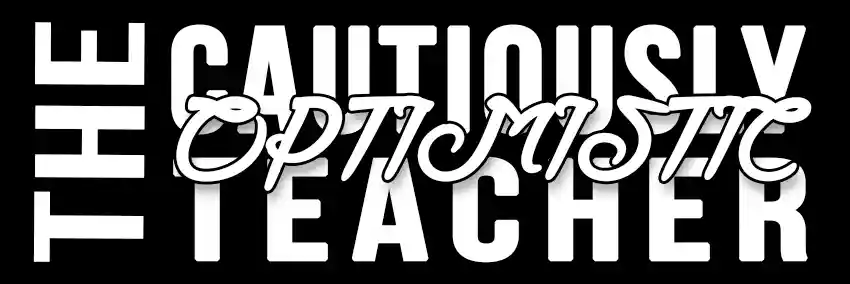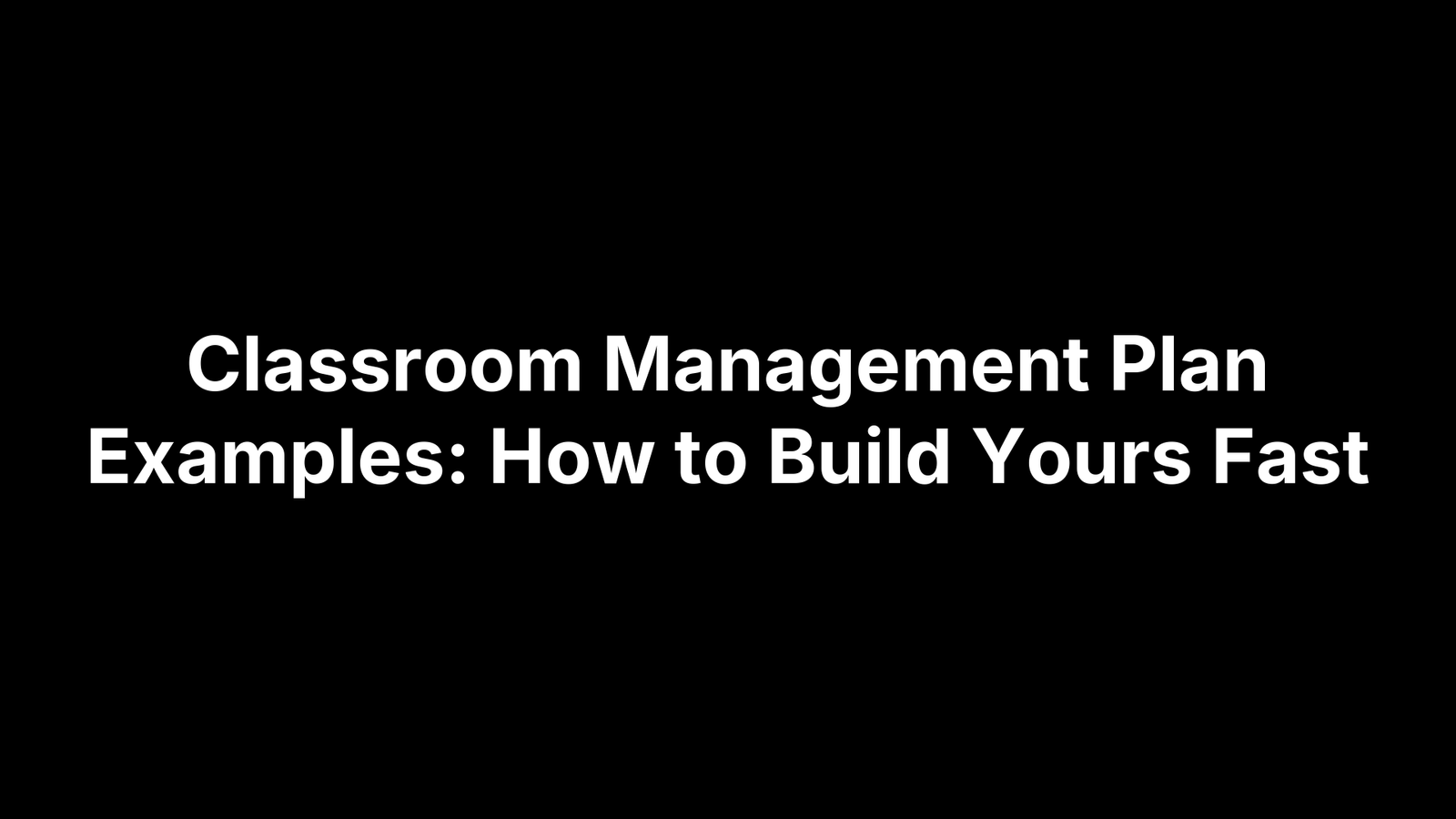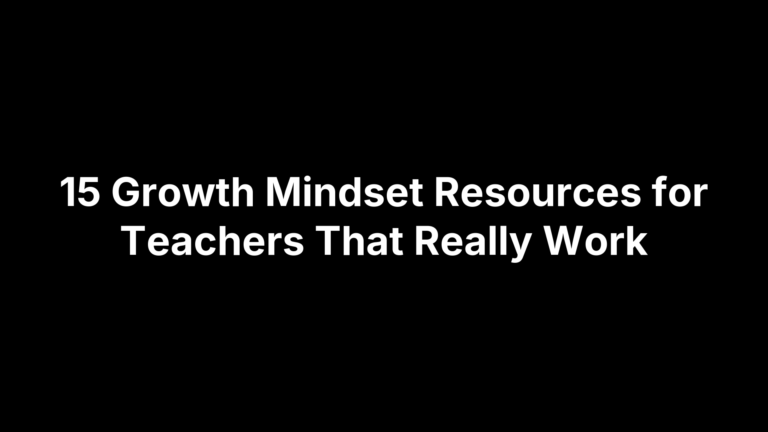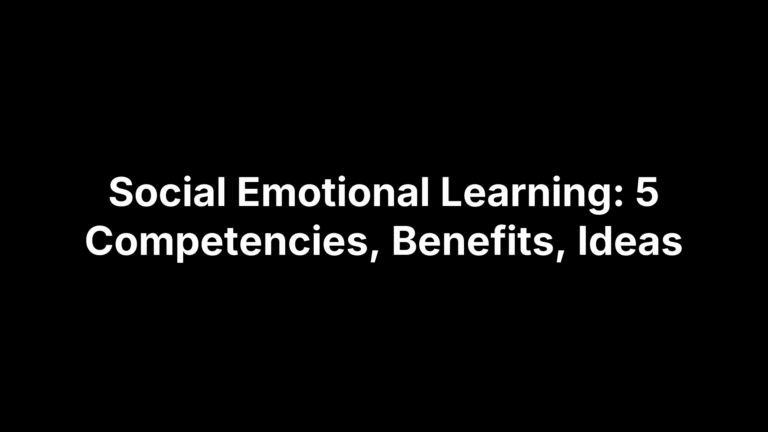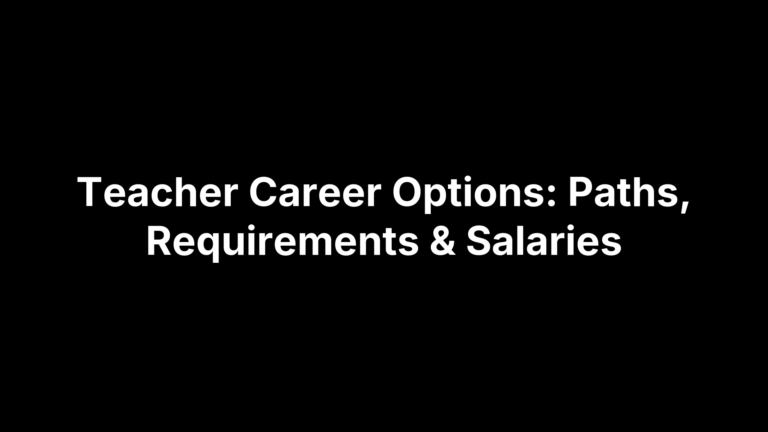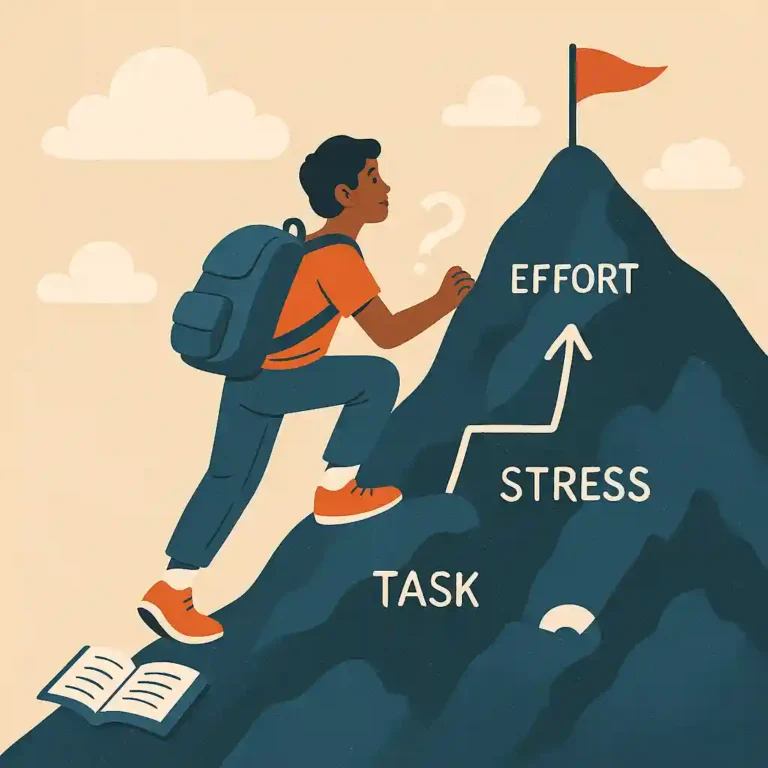Classroom Management Plan Examples: How to Build Yours Fast
Dismissal is in five minutes, the room is humming, and somewhere between collecting notebooks and silencing smartphones you wonder if a tighter system could save your sanity. That system is a classroom management plan, and the sooner it’s on paper the sooner you can focus on teaching. This guide delivers everything you need: three written plans (elementary, middle, high school), downloadable templates in PDF and Word, and a checklist that lets you adapt them in minutes.
A classroom management plan is a concise, living document that spells out your philosophy, three to five rules, daily routines, positive reinforcement, logical consequences, and communication touchpoints. We’ll build yours fast through nine streamlined steps, each packed with checklists, visuals, and tech shortcuts you can copy into files. By the last scroll you’ll download, print, or share a plan that keeps students engaged, administrators smiling, and your mind free for what you do best—teaching.
Step 1: Clarify Your Classroom Management Philosophy
Before you jot down the first rule or print a reward chart, pause and decide what you actually believe about students, learning, and behavior. That belief system—your philosophy—acts like an operating system; every routine, consequence, and reward must run on it or you’ll get glitches the first time the fire alarm rings. A tight philosophy also saves you from “flavor-of-the-month” syndrome: when new initiatives roll in, you can quickly see whether they reinforce or conflict with what you stand for.
Why Your “Why” Matters
- Consistency: Students spot contradictions faster than a TikTok trend. A clear philosophy keeps your responses steady whether it’s period 1 or period 8.
- Credibility: When kids and colleagues understand the rationale behind your choices, pushback drops and cooperation rises.
- Alignment: Most districts already outline core values. Articulating your own helps you braid those mandates into a coherent classroom narrative instead of a random checklist.
Pick a Guiding Framework (5 Ps, 4 Cs, or 7 Rs)
Think of these acronyms as ready-made lenses that translate lofty beliefs into day-to-day language. Choose one that vibes with your grade band and personality.
| Framework | Core Focus | Works Best For | Quick Example Rule |
|---|---|---|---|
| 5 Ps – Prepared, Prompt, Productive, Polite, Positive | Personal responsibility & work habits | Grades 2-6, routines heavy | “Be prepared with materials before the bell.” |
| 4 Cs – Collaboration, Communication, Creativity, Critical Thinking | Academic skills & teamwork | Middle/High project-based classes | “Communicate feedback respectfully during group work.” |
| 7 Rs – Relationships, Rules, Routines, Rights, Responsibilities, Respect, Rewards | Holistic culture & restorative practice | Any grade, especially diverse or inclusive settings | “Honor everyone’s right to learn without interruption.” |
Pick one framework and weave it through everything—from attendance procedures to parent emails—so your classroom management plan examples don’t feel piecemeal.
Write a One-Paragraph Vision Statement
Use this fill-in-the-blank starter to lock in your philosophy:
In our classroom, we value ____ so that ____; therefore, we will ____ every day.
Finished samples for inspiration:
Elementary (5 Ps)
“In our classroom, we value being prepared, prompt, and positive so that everyone feels ready to learn and safe to take risks; therefore, we will greet each other politely and begin morning work within two minutes of the bell.”
High School (4 Cs)
“In our classroom, we value collaboration and critical thinking so that discussions move beyond the textbook; therefore, we will question ideas respectfully and support creative solutions, even when they challenge the status quo.”
Jot yours on a sticky note now—it becomes the headline for the plan you’ll share with students and families tomorrow.
Step 2: Audit Your Unique Teaching Context
Even the slickest classroom management plan examples fall apart if they ignore on-the-ground realities—your students, your policies, and the four walls (plus screens) where everything happens. Spend a single prep period running this audit and you’ll dodge most of the “but that won’t work in my room” objections later.
Know Your Students and Their Needs
Skip the guesswork and gather concrete data. Combine last year’s files with fresh intel collected during week one.
- Demographics: age range, languages spoken, cultural backgrounds
- Academic markers: reading levels, benchmark scores, gifted/talented status
- Support services: IEP, 504, ELL accommodations, counseling notes
- Behavior trends: office referrals, motivation triggers, peer dynamics
- Interests: hobbies, favorite subjects, tech confidence
Mini learner-profile worksheet (copy/paste into Google Forms):
| Item | Student Response |
|---|---|
| Preferred name & pronunciation | |
| I learn best when… | |
| One goal I have this year | |
| Something that frustrates me | |
| My superpower outside school |
Patterns you spot here will shape routines (e.g., extra transition time), seating charts, and reinforcement choices.
Align With School & District Policies
Your plan must dovetail with existing rules or you’ll fight a two-front war. Pull the staff handbook and skim for these hot zones:
- Attendance and tardy procedures
- Electronics and social-media use
- Dress code and hats/hoodies
- Progressive discipline steps (warnings, referrals, parent contact)
- Emergency drills and safety protocols
Mark any non-negotiables in bold on your draft so you don’t accidentally contradict them.
Map Physical and Digital Spaces
Environment cues behavior. Sketch the room and your online platforms before deciding on traffic patterns or device storage.
Simple ASCII example:
Door Whiteboard
+--------------+---------+
| 🪑 🪑 📚 | Chromebooks|
| 🪑 🪑 📚 | Charging |
| 🪑 🪑 📚 | Station |
| Rug / Meet Zone |
+------------------------+
Checklist:
- Entry flow: Can 30 bodies stash backpacks without gridlock?
- Teacher visibility: No blind spots where mischief brews.
- Tech access: Power strips, Wi-Fi dead zones, LMS shortcuts on home screen.
- Acoustic tweaks: tennis balls on chair legs, noise meter app projections.
Free drag-and-drop planners—RoomSketcher, Floorplanner, even Google Slides—let you test layouts in minutes. For digital space, map folder structures and discussion boards so students click three times max to find any resource.
Complete this audit, and your plan will feel custom-fitted, not one-size-fails-all.
Step 3: Translate Expectations Into 3–5 Clear Rules
Rules are the public face of your philosophy—short, memorable statements that guide behavior when you’re across the room helping another student. Three to five is the research-backed sweet spot: enough coverage without turning your whiteboard into a legal code. Think of them as the elevator pitch of your classroom management plan; if students can’t recall them on the way to lunch, they won’t follow them after lunch either.
Craft Positively Worded, Observable Rules
Start every rule with a verb you can see or hear. “Speak kindly,” “Stay on task,” and “Move safely” tell students exactly what doing it right looks like. Compare that with “No disrespect” or “Don’t run,” which force kids (and you) to translate a negative into a positive. Fewer, clearer rules also lighten your cognitive load during hectic moments; instead of hunting for a niche clause, you can simply reference Rule 2 and move on.
Quick checklist for each draft rule:
- Is it stated positively?
- Can another adult walk in and see whether it’s happening?
- Does it apply across settings (lab, library, Zoom breakout)?
Involve Students in Rule Creation
When students help write the rules, ownership skyrockets. Try this 15-minute sequence:
- Hand each learner two sticky notes; ask them to finish the stem “Our class works best when we ______.”
- Post notes on the board, then affinity-group similar ideas.
- As a class, condense clusters into 3–5 broad rules and vote with raised hands or digital polls.
Snap a photo of the final rules and drop it in your LMS so the agreement lives beyond the moment.
Connect Rules to Your Chosen Framework
Use your guiding acronym to keep rules coherent. Example—Middle School using the 7 Rs:
| 7 Rs Pillar | Rule Draft | Visible Behavior |
|---|---|---|
| Respect | Speak kindly to everyone. | Tone, words, body language |
| Routines | Follow entry and exit procedures. | Lined up, materials ready |
| Responsibilities | Come prepared with charged Chromebook. | Device out, logged in |
| Rewards | Celebrate team effort; cheer wins. | Applause, shout-outs |
Notice how each rule directly maps to a pillar, making it crystal-clear why it exists. Students hear the same language in routines, consequences, and the classroom management plan examples you’ll share later, reinforcing consistency with zero extra effort.
Step 4: Design Procedures and Routines for Every Part of the Day
Rules tell students what to do; routines show them how to do it—every single time. A procedure is simply a set of micro-steps that removes guesswork from common moments like passing out papers or logging into the LMS. When procedures become habit, you gain instructional minutes and slash misbehavior because students aren’t filling voids with their own improvisations.
High-Yield Routines to Standardize
Start with the repetitive tasks that currently drain the most time or create the most chaos. Clarify each one in writing, then teach it like content. The two-column chart below is a ready-to-copy blueprint:
| Routine | What Students Do | What Teacher Does |
|---|---|---|
| Morning Entry / Bell Ringer | Enter quietly, place devices in pocket chart, begin warm-up slide within 2 minutes. | Greet at the door, quick attendance scan, reinforce on-task starters. |
| Handing In Work | Place assignment face-up in period tray, check name off posted list. | Stand near trays, offer verbal acknowledgments, spot missing papers in real time. |
| Group Transitions | On “Go,” move chairs, bring notebooks, start team role timers. | Project countdown, circulate for safety and speed, praise first table ready. |
| Device Checkout | Pick up numbered Chromebook, log in, open LMS tab only. | Monitor login screen from dashboard, troubleshoot, record damage notes. |
| Exit Routine | Pack materials, complete digital exit ticket, wait for dismissal cue. | Display exit prompt, stamp planners, release rows when expectations met. |
Post this chart on the wall or embed it in your digital syllabus so it stays visible long after the first teach.
Teach, Practice, and Reinforce Routines
Use a quick three-day cycle to encode each procedure:
Day 1 – I Do
- Model step-by-step while narrating your thinking.
- Highlight where it connects to a rule (“Moving safely keeps everyone’s right to learn intact”).
Day 2 – We Do
- Run the routine together; pause for error checks.
- Invite students to identify what went well and what needs tightening.
Day 3 – You Do
- Students execute independently while you time and tally accuracy.
- End with a micro-celebration (marble in the jar, class cheer).
Revisit practice anytime data shows slippage—especially after long weekends or schedule changes.
Visual & Tech Supports
A few strategic tools make routines stick without your constant narration:
- Routine Posters: Large, icon-based cues for non-readers and ELLs; laminate and mount at eye level.
- Hand Signals: One finger for pencil, three for restroom; eliminates volume spikes during instruction.
- Silent Timers: Projected countdowns or desktop widgets keep momentum without you saying “Hurry up” 20 times.
- QR Codes & Screencasts: Link a code near the Chromebook cart to a 45-second video on proper shutdown; perfect for subs or forgetful classes.
- Noise Meter Apps: On-screen visuals (red/yellow/green) give instant feedback on voice levels.
Integrating these supports turns procedures into autopilot behaviors that free you to focus on feedback and relationship building. They also make your classroom management plan examples tangible: observers can literally watch routines in action and trace them back to the document you drafted in Step 3.
Step 5: Plan Positive Reinforcement and Logical Consequences
Rules and routines set the stage, but motivation is what keeps the show running. A balanced system of rewards and consequences communicates two truths to students: positive behaviors get attention, and missteps are teachable moments—never surprises. Think of this step as wiring an electrical circuit; the current (reinforcement) flows first, while breakers (logical consequences) kick in only when needed. Design both before Day 1 so you’re responding, not reacting.
Layered Reinforcement System
One size never fits all, so stack three tiers that hit the class, group, and individual levels:
Whole-Class:
- Marble Jar: every time the noise meter stays green for 15 minutes, drop a marble. When the jar fills, the class votes on a privilege (extra recess, music during work time).
- Compliment Chain: links added when hallway behavior earns praise from another adult.
Small-Group:
- Team Points: cooperative tables earn tally marks for smooth transitions, tidy materials, or high-quality collaboration. The leading team chooses the next Brain Break video on Friday.
- Mystery Group of the Day: secretly pre-select a group; if they meet the daily target, the entire class earns a mini-reward, building peer accountability.
Individual:
- Behavior-Specific Praise: “Jada, you referenced two sources in that debate—strong critical thinking.”
- Choice Time Tickets: five tickets convert to 10 minutes on the class maker station or reading nook.
- Digital Badges: auto-issued through your LMS for milestones such as 10 consecutive on-time submissions.
Use a 3:1 ratio—aim for three positives before each correction—to keep the culture upbeat without diluting standards.
Develop a Consequence Flowchart
Consequences work best when they’re predictable, incremental, and tied directly to the behavior. Post a simple flowchart like the one below so students see discipline as a process, not a personal attack.
| Level | Teacher Action | Student Action | Example |
|---|---|---|---|
| 1. Reminder | Non-verbal cue or quick proximity | Self-correct | Taps desk to signal off-task chatter |
| 2. Reflection | Quiet verbal prompt + reflection sheet | Complete sheet, rejoin activity | “Take 2 minutes to jot what you need to refocus.” |
| 3. Restorative Chat | 5-minute after-class conference | Identify impact, plan fix | Apology note to lab partner after equipment misuse |
| 4. Office Referral | Document and notify admin & caregiver | Follow school protocol | Repeated defiance after Level 3 |
Key principles: escalate only if behavior persists, match the consequence to the misbehavior’s impact, and reset relationships after each step.
Record-Keeping Made Easy
Paper tracking dies by October. A quick Google Form linked to a QR code on your desk lets you log any Level 2–4 incident in under 30 seconds. Fields to include:
- Date/period (auto-timestamped)
- Student name (dropdown)
- Behavior category (select)
- Action taken (select)
- Notes (optional)
Responses feed a color-coded Sheet that flags patterns—perfect evidence for parent conferences or IEP meetings and an instant pulse check on whether your reinforcement-to-consequence ratio needs a tune-up. When the data shows positivity outpacing penalties, your classroom management plan example is humming exactly as designed.
Step 6: Optimize the Physical and Digital Environment
Furniture, wall space, and screen policies quietly shape behavior long before a consequence chart kicks in. Tightening these elements turns your rules and routines into muscle memory because the room itself cues the next correct action. Spend one planning period here and even the best classroom management plan examples you’ve studied will feel tailor-made for your space.
Seating Arrangements That Support Behavior
| Layout | Best For | Watch Out For |
|---|---|---|
| Traditional Rows | Direct instruction, quick attention shifts | Limited collaboration, tricky circulation |
| Pods/Groups | Cooperative learning, peer tutoring | Off-task chatter, blocked sightlines |
| U-Shape | Class discussions, demonstrations | Large footprint, lone students at the ends |
| Flexible Seating | Student autonomy, sensory needs | Clear expectations required for choice rotation |
Tip: Keep high-movement students on aisle seats and place tech carts near power to avoid cord hazards.
Environmental Cues and Tools
- Noise Meter Apps (e.g., BouncyBalls, Too Noisy Pro): Project in real time so students self-adjust voice levels.
- Anchor Charts: Post key routines at eye level; swap graphics seasonally to regain attention.
- Color-Coded Bins: Red = turn-in, Blue = supplies, Green = finished work. Visual sorting saves you verbal reminders.
- Lighting Options: Lamp corners or LED strips reduce glare and calm restless classes during independent work.
Set Digital Norms
Clarify online expectations the same way you did physical ones:
- LMS Etiquette: Use academic language, cite sources, no spam reactions.
- AI Tool Boundaries: AI is for brainstorming, not verbatim answers—credit any generated content.
- Screen-Time Protocols: Devices flat at 45° unless “screens up” is announced; lids closed during peer sharing.
Post a shared pledge in your LMS or print it near the charging station:
Digital Citizenship Pledge
I will:
- Respect others’ work and privacy
- Verify information before sharing
- Credit all sources, human or AI
- Close devices when asked and stay present
Signed: __________ Date: __________
When the environment echoes your philosophy, students have fewer chances—and less desire—to go off script.
Step 7: Build Relationships and Communication Channels
A slick set of procedures can crumble if students feel unseen or families stay in the dark. Your classroom management plan only works when relationships form the mortar between rules, routines, and reinforcement. Block out intentional time to connect early, keep the conversation flowing all year, and make sure every student’s culture shows up on the walls—and in your lesson slides—right alongside the periodic table.
First Two-Weeks Relationship Builders
- Door-way Greetings: Meet every learner at eye level with their chosen name and a quick check-in (“How’d the soccer scrimmage go?”). A 30-second touchpoint beats a five-minute office referral later.
- Interest Inventories: Use a one-page Google Form that asks for favorite music, weekend hobbies, and a self-rated comfort level with each subject strand. Review patterns before finalizing seating groups.
- Class “About Me” Slides: Give students a single template—photo, fun fact, goal—to complete during the first tech session. Rotate two per day as warm-ups so peers connect names to faces and passions.
Ongoing Family & Caregiver Communication
Pick one primary channel and stick to it so parents aren’t hunting for updates.
| Platform | Strength | Possible Snag |
|---|---|---|
| Email Newsletter | Long-form details, attachments | Spam filters, low open rate |
| Remind | Quick texts, translation built-in | Character limit |
| ClassDojo | Behavior points + photos | Needs app download |
Schedule rhythm: Monday agenda preview, Thursday celebration snapshot, urgent messages as needed.
Positive “first contact” template (copy/paste):
Subject: Quick Good News About __________
Hi __________,
I wanted to share a bright spot from our first week. Today, __________ volunteered a thoughtful question that sparked great discussion. Their curiosity set a positive tone for the class, and I appreciated it.
Looking forward to partnering with you this year!
Best,
[Your Name]
Send this for every student before the first progress report to frame collaboration as a two-way win.
Culturally Responsive Connections
- Pronunciation Checks: Record student name pronunciations with a tool like NameCoach; practice until you nail them.
- Representative Materials: Audit bulletin boards and examples—do the images, authors, and historical figures reflect your roster? Swap out any tokenism for authentic inclusion.
- Inclusive Celebrations: Poll families about important holidays; invite guest speakers or virtual tours that highlight those events so recognition goes beyond a poster.
When students see their identities respected and families treated as partners, small issues surface early—long before they become line-item consequences in even the best classroom management plan examples.
Step 8: Document, Share, and Display Your Plan
A plan that only lives in your notebook won’t shape student behavior. Step 8 turns all the thinking you’ve done into a tight, share-ready artifact everyone can see and use. Keep it short, visually clear, and easy to update—think one side of a paper, not a manifesto.
Assemble a One-Page Classroom Management Plan
Pull the essentials into six labeled blocks:
- Philosophy (one-sentence vision)
- Rules (3–5 bullet points)
- Routines (top five procedures)
- Reinforcement & Consequences (flowchart or icons)
- Environment Cues (seating, tech norms)
- Contact Info (how families reach you)
Use headings, icons, or color bands so readers can scan in under a minute. If it won’t fit on one printed page, trim words, not font size.
Choose a Format That Saves Time
| Format | Pros | Possible Hassle |
|---|---|---|
| Google Doc | Real-time edits, share link | District firewalls |
| Word Doc | Offline access, track changes | Version control |
| Canva Infographic | Visually engaging, drag-and-drop icons | Learning curve |
| Flat PDF | Locks layout, easy to print | Hard to revise |
Pick the tool you already open daily; fancy layouts matter less than fast updates. Editable versions of each option are linked right below this section so you can copy and customize in seconds.
Post and Review With Stakeholders
- Students: Hold a circle discussion on day one; invite questions, then have everyone sign the bottom.
- Families: Email a PDF during week one and attach it to your Remind/ClassDojo welcome message.
- Visibility: Pin the doc on your LMS homepage and tape a color printout by the door.
Revisit the plan briefly after long breaks or policy shifts so it stays a living guide, not wall art.
Step 9: Monitor, Reflect, and Revise With Data
Even the sharpest plan gets dull without routine sharpening. Tracking behavior trends, pausing to reflect, and tweaking systems keeps your classroom running smoother than the first-week honeymoon. The goal isn’t perfection; it’s a continuous feedback loop that turns data into daily improvements—no crystal ball required.
Collect Ongoing Behavior Data
Skip giant spreadsheets and focus on bite-size metrics you can log in under a minute:
- Frequency tallies for common issues (calling out, off-task tech use)
- ABC (Antecedent–Behavior–Consequence) quick notes to spot triggers
- Color-coded seating charts that flag hot spots or peer conflicts
- Auto-generated LMS reports for late submissions or missing work
Set a timer for the last three minutes of class to jot observations before memories fade.
Reflection Protocols
Reserve 10 minutes every Friday for a micro debrief:
- What succeeded this week, and why?
- Where did students struggle with rules or routines?
- What single tweak will I test on Monday?
Jot answers in a running Google Doc so patterns jump off the page. Pair the journal with brief student surveys each month; their voice often explains the numbers.
Mid-Semester Plan Tune-Up
Use this checklist to decide whether your classroom management plan needs a refresh:
- Rule recall has dropped below 70 % on pop quizzes
- More than two students per week reach consequence Level 3
- Reward systems feel stale (jar hasn’t filled in three weeks)
- New curriculum units change workflow or seating needs
- Data shows one demographic group receiving disproportionate corrections
Hit at least two indicators? Revisit earlier steps, adjust wording, reteach routines, and swap in fresh reinforcement ideas from the classroom management plan examples you saved earlier. Twenty focused minutes now prevents months of frustration later.
Step 10: Ready-to-Use Classroom Management Plan Examples & Templates
Reading about structure is helpful; holding an actual plan in your hands is faster. Below you’ll find three classroom management plan examples—one for each common grade band—plus a blank template you can fill out in under half an hour. Each sample is offered in two formats: a flat PDF you can print today and an editable file (Word, Google, or Canva) for painless customization. Pick the one closest to your situation, copy what works, tweak the rest, and you’ll walk into class tomorrow with a polished, student-ready document.
Elementary School Sample (PDF + Editable Doc)
Designed for grades K-5, this plan leans on the 5 Ps to keep directions concrete and kid-friendly.
4 Positively Worded Rules
- Be Prepared
- Be Positive
- Be Polite
- Be Productive
Picture-Supported Routines
Entry, carpet meeting, and supply cleanup each get a mini-poster with icons so non-readers can self-monitor.Whole-Class Reward: Marble Jar
When the jar fills, students vote on a 20-minute choice block (STEM bins, art station, or extra recess).Logical Consequences Ladder
Visual traffic-light chart moves from “Think Spot” to “Buddy Classroom” before any office referral.
Key adaptations: larger fonts, primary colors, and QR codes linking to 30-second modeling videos—perfect for subs and para-educators.
Middle School Sample (Google Doc Template)
Sixth through eighth graders crave autonomy balanced with clear boundaries. This example uses the 7 Rs framework.
Rules Aligned to 7 Rs
“Respect Everyone,” “Follow Routines,” “Own Responsibilities,” and “Earn Rewards” are posted in student-created sketchnote style.Tech-Use Routine
Chromebooks remain at 45° unless the slide says “Screens Up.” A built-in flowchart shows what happens after the first, second, and third off-task clicks.Points-and-Privileges System
Table teams earn points for on-task collaboration; weekly champs choose music for Friday writing time. Individual students bank digital badges toward “Homework Pass” coupons.Restorative Reflection Form
A Google Form auto-emails students their responses and tags you for follow-up, cutting paperwork to zero.
High School Sample (Word & Canva Versions)
Older students respond to transparency and choice. This plan riffs on the 4 Cs and layers in restorative practices.
Four Core Rules—Collaborate, Communicate, Create, Think Critically—each paired with sample “look-fors” like eye-contact or citation usage.
Flexible Seating Contract
Desks, couches, and standing tables stay open as long as productivity targets (task completion, decibel meter) are met. Students co-sign the contract during Week 1 seminars.Restorative Practices Ladder
Instead of detention, conflicts trigger a three-stage process: Written Reflection ➜ Peer Mediation ➜ Restorative Circle with stakeholders. Steps are time-stamped so consequences don’t drag on.Senior-Ready Portfolio Tie-In
Behavior goals link directly to the school’s graduation portfolio rubric, showing immediate relevance.
Blank Template Walkthrough
Short on prep time? The blank template streamlines each section into fillable blocks:
| Section | Prompt | Estimated Time |
|---|---|---|
| Philosophy | One-sentence vision | 2 min |
| Rules | List 3–5 verbs | 3 min |
| Routines | Top 5 procedures | 7 min |
| Reinforcement & Consequences | Pick or paste a system | 8 min |
| Environment Cues | Note seating & tech norms | 5 min |
| Contact Info | Preferred channels | 2 min |
Total: 27 minutes. Drop in your answers, swap your school colors, and hit print—or save as a PDF to post on your LMS. By combining these classroom management plan examples with the quick-fill template, you’ll move from “I really should write that plan” to “Here’s our class roadmap” before the late bell rings.
Your Plan in Action
A solid classroom management plan is proactive, flexible, and relentlessly student-centered. You now have the frameworks, checklists, and fully written classroom management plan examples to prove it. Download the sample that matches your grade band, swap in your own vision statement, and post the one-page plan where kids and caregivers can actually see it.
Tonight, choose a guiding acronym—5 Ps, 4 Cs, or 7 Rs—then schedule 30 focused minutes to complete the blank template. Tomorrow, walk into class ready to teach routines instead of putting out fires. As you track data and collect feedback, revise the document just like any living curriculum tool; improvement is a feature, not a flaw.
Need more shortcuts? Explore the free AI worksheet generators, differentiation helpers, and weekly tips available at The Cautiously Optimistic Teacher. Your next bell rings soon—let’s make every minute count.
